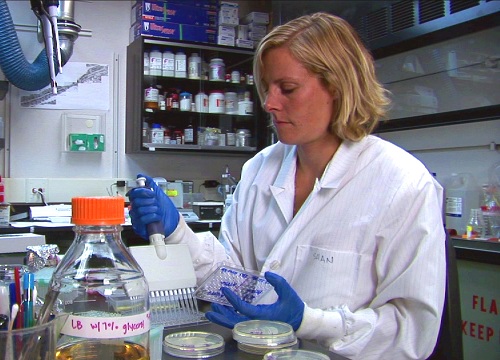
Name Shannon Johnson
- Education M.S. in Molecular Ecology and Invertebrate Zoology, B.S. in Ecology and Evolution
- Target Audience Elementary School

Mermaids, giant squids, the Kraken... what types of creatures emerge from the deep? That is the question that Shannon Johnson is trying to answer. When out to sea, Shannon's view of the deep is like watching the Discovery Channel in real-time. Whether traveling the world collecting specimens or working in the lab analyzing their DNA, Shannon Johnson has such a cool job!
I work on population genetics and phylogenetics of deep sea animals. What we're most interested in are the evolutionary questions surrounding these animals from the deep-sea. We are curious how they adapted to live at these depths and temperatures. The animals live in really extreme environments - it's completely dark, it can either be really cold or really hot and acidic. We use DNA to compare deep-sea animals to see if they are evolutionarily older than shallow water animals. When hydrothermal vents were first discovered there was a theory that animals that live there are living fossils because life probably began in a chemosynthetic environment. Years of molecular and fossil evidence have shown that deep-sea fauna are actually quite young compared to shallow animals. With respect to climate change, we once thought that the deep-sea was an isolated environment and that the shallow water and surface environment didn't affect it. However, it turns out that deep-sea animals are even more susceptible to climate changes because they are so highly adapted to live in very specialized environments- low oxygen will wipe them out. For example, the vent snails, Alviniconcha, live surrounding the chimneys in vents. They live in such warm, acidic water that they can barely form shells, however, they are very susceptible to changes in oxygen levels. So these snails live in what is essentially to us poison, but they need to breathe! Shallow animals are a bit more resistant to climate changes, especially sub-tidal and intertidal animals, because they see daily dramatic changes in oxygen, pH, and temperature with tidal changes never experienced by deep-sea animals.
My job allows me to go to sea and collect deep-sea animals from all over the world, then bring them into the lab to extract and sequence their DNA, use statistics to understand ecological and evolutionary processes, and then write the story. I am really lucky, as far as technicians are concerned, because I get to participate in all aspects of the research process.
I think this career chose me. First I thought I was going to be a fashion designer, then I thought I was going to be a doctor, but ultimately I couldn't make myself work inside. When I was at UCLA I worked in a lab setting spawning worm larvae in order to answer evolutionary questions. I was studying sponges and other invertebrates to see if they have the genes necessary to make eyes and other higher level anatomical structures - they do. That got me interested in invertebrates, marine science and genetics. I went into molecular ecology, and I never dreamed I would get to work in the deep sea - I did my master's thesis on mussels, a shallow marine animal located on the sides of rocks. My current boss was on my thesis committee in school and offered me a job as I was finishing, so I was extraordinarily lucky.
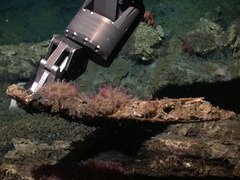 Every day is different, and that is one thing that makes my job really fun. Some days I am out to sea on a boat. These days are fun and exciting because it's like watching the Discovery Channel in real-time. I get to see things that no one has seen. In order to get our specimens we use remotely operated vehicles (ROV's). We have actually gotten to use Alvin, the manned submersible that discovered the Titanic, but 99% of our work at MBARI is with ROV's. People can only scuba dive to a depth of roughly 200 feet, and 99% of the ocean is deeper that, especially the neat stuff. Being able to send robots instead of humans is great because they don't get tired or have to use the bathroom. If you are good at video games you would probably be a great ROV pilot because it is like a video game. There are arms that you have to manipulate to pick things up and you can make the ROV sit down next to a hydrothermal vent or a whale fall to pick up samples of animals, rocks or mud.
Every day is different, and that is one thing that makes my job really fun. Some days I am out to sea on a boat. These days are fun and exciting because it's like watching the Discovery Channel in real-time. I get to see things that no one has seen. In order to get our specimens we use remotely operated vehicles (ROV's). We have actually gotten to use Alvin, the manned submersible that discovered the Titanic, but 99% of our work at MBARI is with ROV's. People can only scuba dive to a depth of roughly 200 feet, and 99% of the ocean is deeper that, especially the neat stuff. Being able to send robots instead of humans is great because they don't get tired or have to use the bathroom. If you are good at video games you would probably be a great ROV pilot because it is like a video game. There are arms that you have to manipulate to pick things up and you can make the ROV sit down next to a hydrothermal vent or a whale fall to pick up samples of animals, rocks or mud.
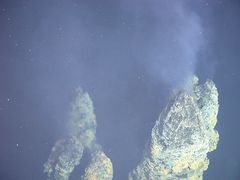 Hydrothermal vents are really cool. They are basically a thin spot in the earth's crust that creates something of an underwater volcano. In the ocean there is really cold ambient seawater-usually just above freezing at 4 degrees Celsius- that is heavy and dense due to its low temperature. This ambient seawater sometimes sinks into the earth's crust. When that water hits a thin spot in the earth's crust it comes into contact with magma from the earth's core and heats up. Eventually it gets so hot - sometimes around 400 degrees Celsius - that it actually melts the minerals in the earth's core. It then shoots out of the crust, looking like black smoke coming out of a chimney. There are all sorts of minerals in the chimneys, including minerals that people mine for like gold and manganese. The minerals that are important to us are hydrogen, sulfide and methane, which are poisonous to us. However, there are specialized bacteria that can consume the hydrogen, sulfide and methane. Many animals live symbiotically with these bacteria, like clams, mussels, and tubeworms. There are also animals like limpets and snails that eat these bacteria. Everything at vents is reliant on bacteria in some way- either by living symbiotically with it, grazing it, or eating things that are reliant on it. That is how an entire ecosystem forms in these extreme conditions.
Hydrothermal vents are really cool. They are basically a thin spot in the earth's crust that creates something of an underwater volcano. In the ocean there is really cold ambient seawater-usually just above freezing at 4 degrees Celsius- that is heavy and dense due to its low temperature. This ambient seawater sometimes sinks into the earth's crust. When that water hits a thin spot in the earth's crust it comes into contact with magma from the earth's core and heats up. Eventually it gets so hot - sometimes around 400 degrees Celsius - that it actually melts the minerals in the earth's core. It then shoots out of the crust, looking like black smoke coming out of a chimney. There are all sorts of minerals in the chimneys, including minerals that people mine for like gold and manganese. The minerals that are important to us are hydrogen, sulfide and methane, which are poisonous to us. However, there are specialized bacteria that can consume the hydrogen, sulfide and methane. Many animals live symbiotically with these bacteria, like clams, mussels, and tubeworms. There are also animals like limpets and snails that eat these bacteria. Everything at vents is reliant on bacteria in some way- either by living symbiotically with it, grazing it, or eating things that are reliant on it. That is how an entire ecosystem forms in these extreme conditions.
 We have been studying whale falls for about 10 years. When whales die in the ocean they sink to the bottom. Because the food sources in the deep sea are pretty limited, the fallen whales create a large food source. Some of the first creatures you see at a whale fall are hagfish, sharks and crabs. These creatures work to first consume all the whales' flesh. Once the flesh is gone, and just the bones remain, a thick bacteria mat forms. You would think that was the end of the whale story but no! Food can be limited and the deep-sea animals have evolved all sorts of creative ways to persist. We discovered worms and snails that both consume bone. The worms, called Osedax, or "bone-eaters", are plant-like worms that are very simple creatures. They have a green "root" system that sits down in the bones where they house symbiotic bacteria that consume the bones. They have a gelatinous tube that kind of looks like snot. In fact, when we first found them we called them "green snot worms". They also have a trunk and a beautiful red plume for breathing. No mouth, no gut! These worms are even cooler than that. Turns out all the big worms are female, and each female, depending on the species, has many hundred tiny dwarf males inside her tube. The males are little more than larvae with sperm. We have discovered around 20 different species of these worms, and they are found worldwide. There are several species in Sweden, Japan, the Antarctic, Southern California and off the coast of Portugal. The snails that live off the bones are called Rubyspira, which pick out bone fragments from under the mud. We actually published a paper and photos of the Rubyspira a few years ago and got a very interesting response. We received a bunch of phone calls from paleontologists asking where we had found these snails because they had been extinct for 130 million years. So of course we thought "wow we have a living fossil here!" Well, it turns out that evolutionarily they are quite young and just representatives of that lineage, not necessarily true living fossils. But it was an exciting find nonetheless.
We have been studying whale falls for about 10 years. When whales die in the ocean they sink to the bottom. Because the food sources in the deep sea are pretty limited, the fallen whales create a large food source. Some of the first creatures you see at a whale fall are hagfish, sharks and crabs. These creatures work to first consume all the whales' flesh. Once the flesh is gone, and just the bones remain, a thick bacteria mat forms. You would think that was the end of the whale story but no! Food can be limited and the deep-sea animals have evolved all sorts of creative ways to persist. We discovered worms and snails that both consume bone. The worms, called Osedax, or "bone-eaters", are plant-like worms that are very simple creatures. They have a green "root" system that sits down in the bones where they house symbiotic bacteria that consume the bones. They have a gelatinous tube that kind of looks like snot. In fact, when we first found them we called them "green snot worms". They also have a trunk and a beautiful red plume for breathing. No mouth, no gut! These worms are even cooler than that. Turns out all the big worms are female, and each female, depending on the species, has many hundred tiny dwarf males inside her tube. The males are little more than larvae with sperm. We have discovered around 20 different species of these worms, and they are found worldwide. There are several species in Sweden, Japan, the Antarctic, Southern California and off the coast of Portugal. The snails that live off the bones are called Rubyspira, which pick out bone fragments from under the mud. We actually published a paper and photos of the Rubyspira a few years ago and got a very interesting response. We received a bunch of phone calls from paleontologists asking where we had found these snails because they had been extinct for 130 million years. So of course we thought "wow we have a living fossil here!" Well, it turns out that evolutionarily they are quite young and just representatives of that lineage, not necessarily true living fossils. But it was an exciting find nonetheless.
I love all the new discoveries. I wasn't that interested in marine science as an undergraduate student because I thought we had it the oceans all figured out. I thought we knew what was out there and how it all worked. But even just in our own "backyard" (the Monterey Bay) every time we go to sea we find new species. We even found a new family of crabs at hydrothermal vents in the south Pacific. Frankly, because we work to compare the genes within a species it makes it hard to do our jobs. It's kind of hard to do population genetics between species. This is a great annoyance to have, though. In a time when more things are going extinct than we can count it is fun to be finding new things all the time.
I was admittedly not a great student in high school because I was more interested in skiing and snowboarding. I went to a junior college first before going to a university, which helped a lot to give me some confidence in myself academically. That's when the doctor plans came up, which I discovered was not a good fit for me. I was pretty lucky because my mentor showed me how fun marine science was, and I was able to follow my heart and not corner myself into a career that I thought I should do instead of doing something I thought was fun.
I had a really great mentor in college named Shannon Lee. She was very gentle in her mentorship and she never told me what I should do. Instead, she exposed me to neat stuff and let me figure it out for myself. She was very generous with her time. Looking back I can't believe how much time she spent with me. She was a Ph. D. student at UCLA and she took time away from her Ph. D. work to spend an amazing amount of time with us undergraduates. In Los Angeles there isn't a ton of marine life to look at, so UCLA has a program called the "marine biology quarter" that allowed us to go up to Bodega Bay for a quarter and check out the natural environment.
I started out majoring in biochemistry, so I would say the engineering (weed) classes were really challenging. They took a lot of hard work. I had to utilize tutors and study a lot!
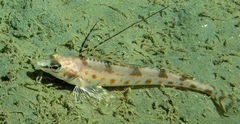 I recommend going to an aquarium if there is one near you, or go check out the inter-tidal environment if you live near the ocean. For kids with no access to the ocean you can check out our PhoBOS (Photographic Benthic Observing System). This system is an integrated suite of instruments that have been placed at the MARS site to monitor ocean conditions and seafloor life. You can access real-time underwater pictures and actually see the tidal signatures and temperature changes. We were actually surprised to see how much the temperature changes in the deep see because we didn't think it changed that much, when in reality it changes a lot! There is also a project called the Neptune Canada project is "the world's first regional-scale underwater ocean observatory network that plugs directly into the Internet. People everywhere can ‘surf the seafloor,' while ocean scientists run deep-water experiments from labs and universities around the world. These projects are something that any kid anywhere in the world with an internet connection can look at.
I recommend going to an aquarium if there is one near you, or go check out the inter-tidal environment if you live near the ocean. For kids with no access to the ocean you can check out our PhoBOS (Photographic Benthic Observing System). This system is an integrated suite of instruments that have been placed at the MARS site to monitor ocean conditions and seafloor life. You can access real-time underwater pictures and actually see the tidal signatures and temperature changes. We were actually surprised to see how much the temperature changes in the deep see because we didn't think it changed that much, when in reality it changes a lot! There is also a project called the Neptune Canada project is "the world's first regional-scale underwater ocean observatory network that plugs directly into the Internet. People everywhere can ‘surf the seafloor,' while ocean scientists run deep-water experiments from labs and universities around the world. These projects are something that any kid anywhere in the world with an internet connection can look at.
This field is moving toward genomics and comparative genomics. When I first entered the field we used to compare one fragment of one gene. This can be similar to looking at hair color in an entire population and saying "Look at all the people with blonde hair as opposed to those with brown hair. They must be different." Now it has expanded to looking at the whole genome -it's like looking at a whole person as opposed to just their hair color. The problem with that is that there is so much data that we can't handle it. Right now the field is kind of grinding to a halt because you have to have pretty good programming skills to know how to deal with all these data. Having computing skills are really going to make someone successful in this field. I have two colleagues who are taking a three month sabbatical just to learn how to write more code to deal with their data. People may look at marine biology and think there is just one way into it, but really there are a number of different ways in. You can take a more technical approach or you can focus on communication and writing. Marine science is a huge and collaborative field. It takes all sorts of people to put together these complicated stories about and make them understandable and interesting. There's really something for everyone in this field.
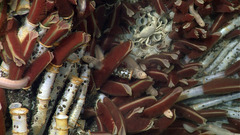 I can't imagine a job that is more fun. Well, maybe engineering. We need more women as engineers, in this field especially. If I had to go back and do things differently I probably would have continued to pursue the engineering track, but for some reason being an engineer never occurred to me. I want to encourage more women to be engineers because of the job prospects offered by engineering are wonderful, which is something I can't necessarily say for the field of ecology. My field is saturated with people with Ph. D. level educations that are lining up to find a job, but this doesn't seem to be the case with engineering. Work hard, don't give up and have fun!
I can't imagine a job that is more fun. Well, maybe engineering. We need more women as engineers, in this field especially. If I had to go back and do things differently I probably would have continued to pursue the engineering track, but for some reason being an engineer never occurred to me. I want to encourage more women to be engineers because of the job prospects offered by engineering are wonderful, which is something I can't necessarily say for the field of ecology. My field is saturated with people with Ph. D. level educations that are lining up to find a job, but this doesn't seem to be the case with engineering. Work hard, don't give up and have fun!
Biochemistry: The science dealing with the chemistry of living matter.
Ecology: The branch of biology dealing with the relations and interaction between organisms and their environment.
Genomics: The study of genomes.
Larvae: The young of any invertebrate animal.
Phylogenetics: The study of the development or evolution of a particular group of organisms.
Symbiotic: Having an interdependent relationship.
(adapted from www.dictionary.com)
Meet Wen-lu Zhu! She works as a scientist studying deep sea rocks in hy…